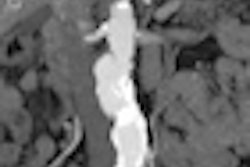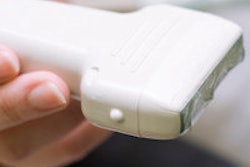Many men who are at risk for an abdominal aortic aneurysm (AAA) unfortunately don't get screened for the often deadly condition. But Kaiser Permanente in California has found a way to reach more of them by integrating alerts for screening into its electronic health record (EHR) software.
The screening program alerts providers when at-risk patients should receive an aortic ultrasound scan for AAA screening. Within 15 months of implementation, the program led to a greater than 50% reduction in the number of at-risk men who didn't receive screenings, according to a research team led by Dr. Robert Hye, chief of vascular surgery at Kaiser Permanente San Diego Medical Center. The group shared its experience in an article published online February 10 in the Journal of Vascular Surgery.
"This experience demonstrates the efficacy and immediate yield of this program in identifying patients with previously undetected AAAs and reducing the number of unscreened patients in our members," the authors wrote. "Diagnosis of patients with small AAAs and aortic ectasia also facilitates implementation of cardiovascular risk-reduction strategies and discussion with patients for this segment of our population."
Ultrasound screening for AAA remains underutilized, despite being recommended by the U.S. Preventive Services Task Force (USPSTF) and the American Heart Association (AHA) since 2005; also, since 2007, Medicare has covered a one-time screening ultrasound for new at-risk male enrollees.
A 2007 review of patients in the Kaiser Permanente system who had ruptured AAAs revealed that the majority were undiagnosed but met USPSTF and AHA screening guidelines. Therefore, the health system's Southern California network launched a screening program for AAA using its HealthConnect EHR.
After examining the EHRs of 68,164 men who met initial screening criteria, the researchers created an alert in the EHR that informed providers that these patients should receive an aortic ultrasound for AAA screening. They then followed these men from March 2012 to June 2013.
Over the 15 months, 54,356 (79.7%) of the patients went on to receive an aortic ultrasound scan. Screening rates increased at all centers where the alerts were active, and the alerts reduced the percentage of unscreened at-risk patients system-wide from 51.7% to 20.3%, according to the researchers.
During the period, 731 new AAAs were diagnosed, including 165 larger than 4 cm in diameter.
"In an integrated healthcare system using an EMR, AAA screening can be implemented with a dramatic reduction in unscreened patients," the authors concluded. "Further analysis is required to assess the impact of the screening program on AAA rupture rate and cost-effectiveness in our system."




















